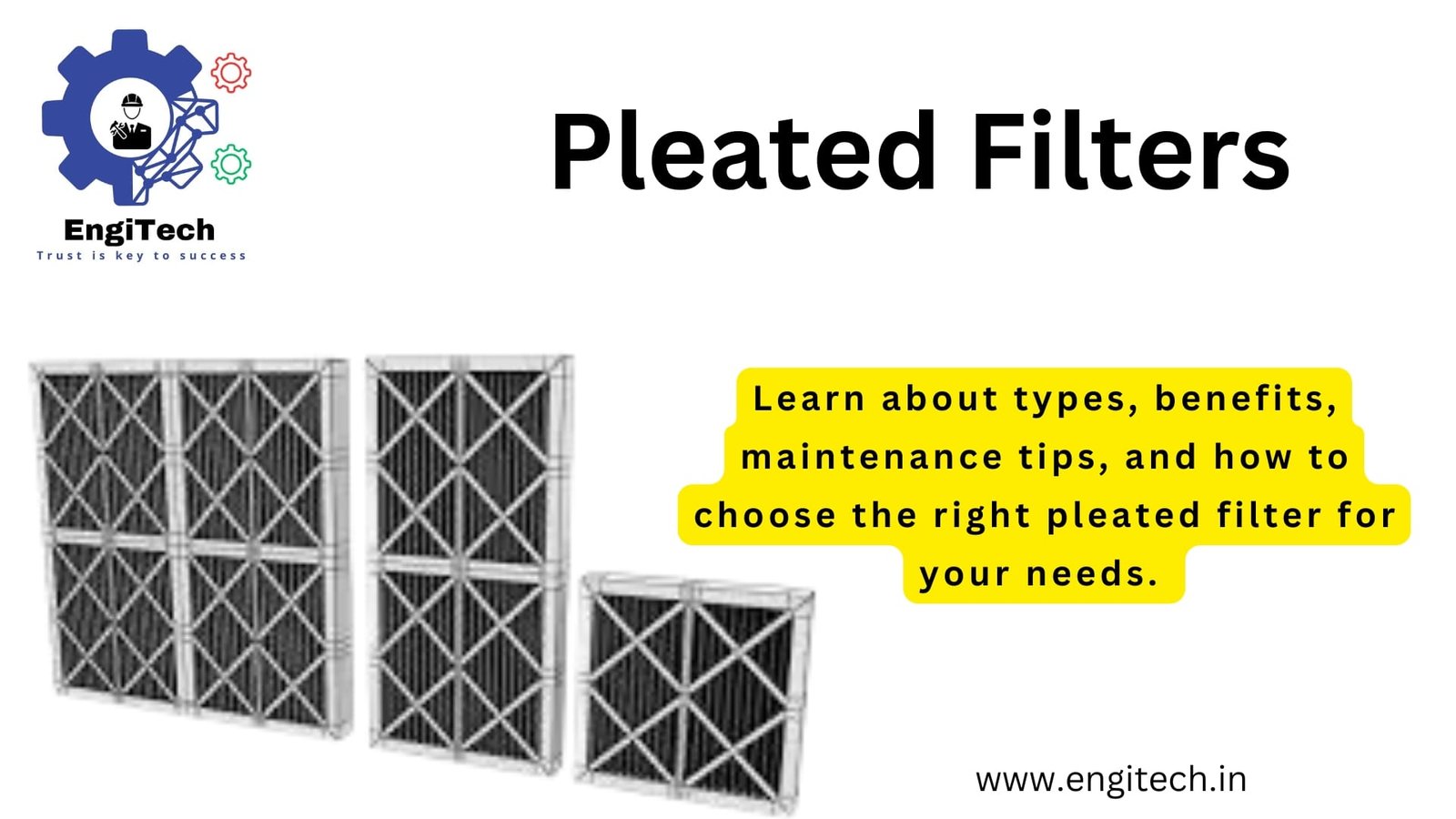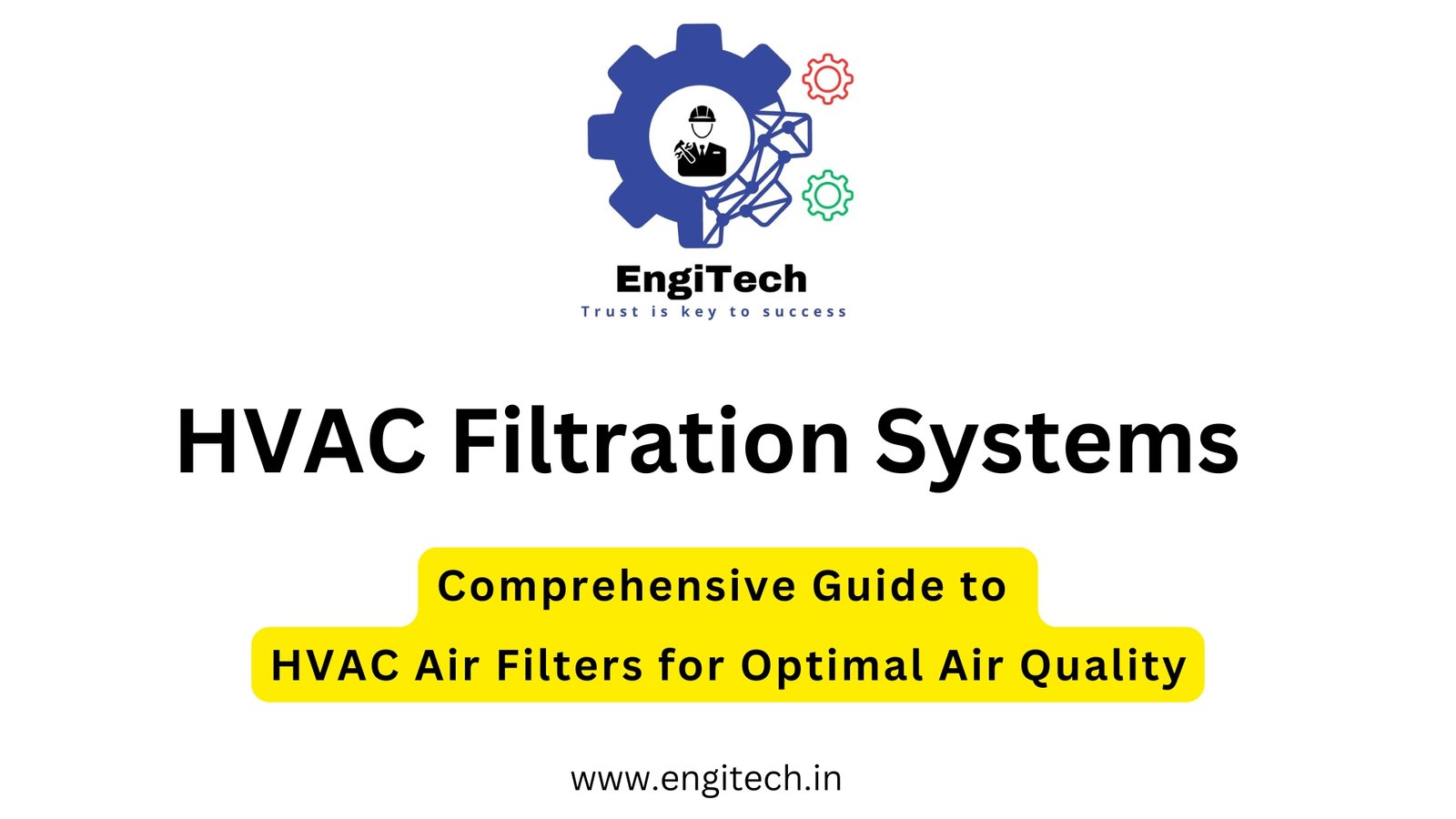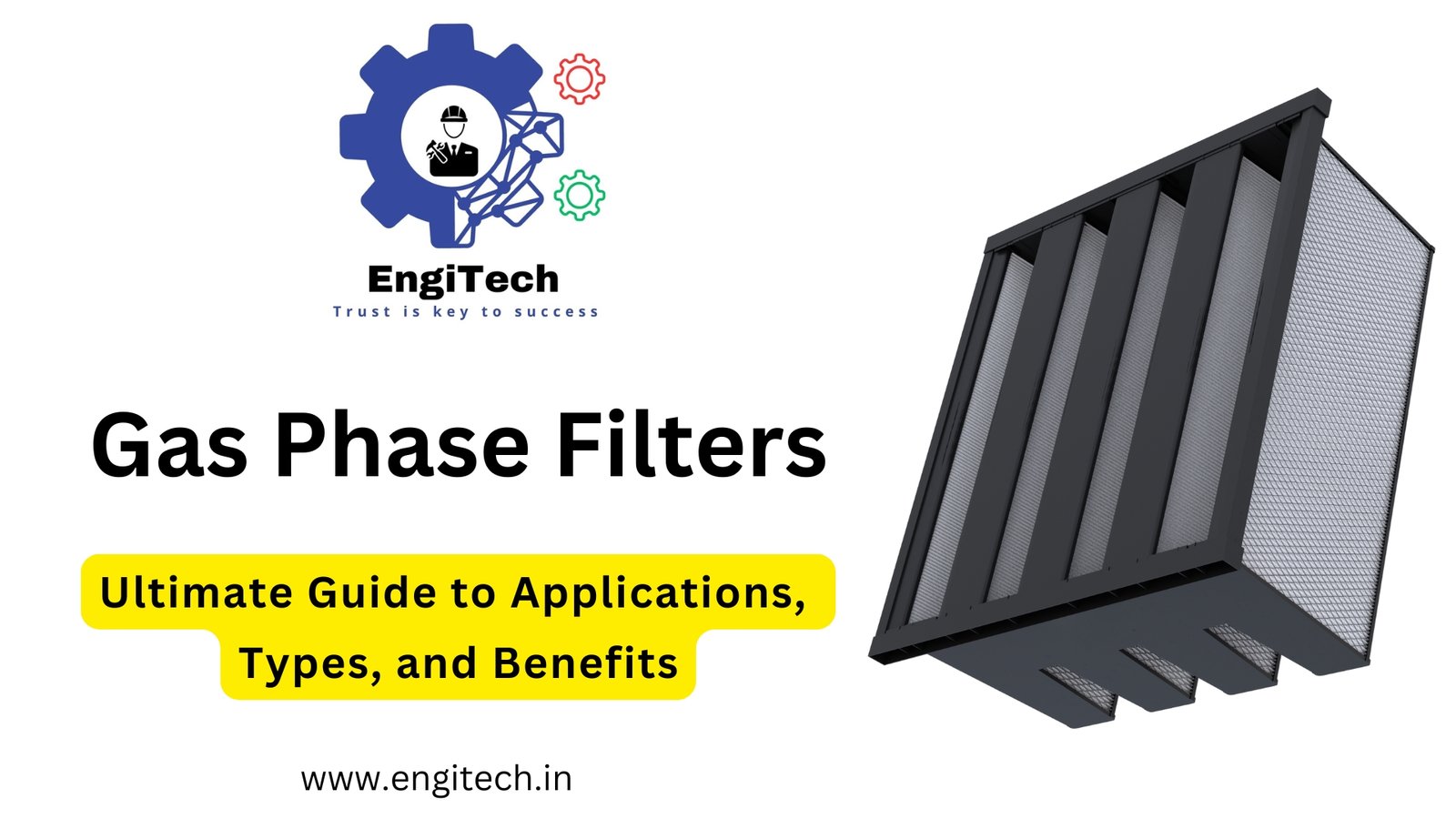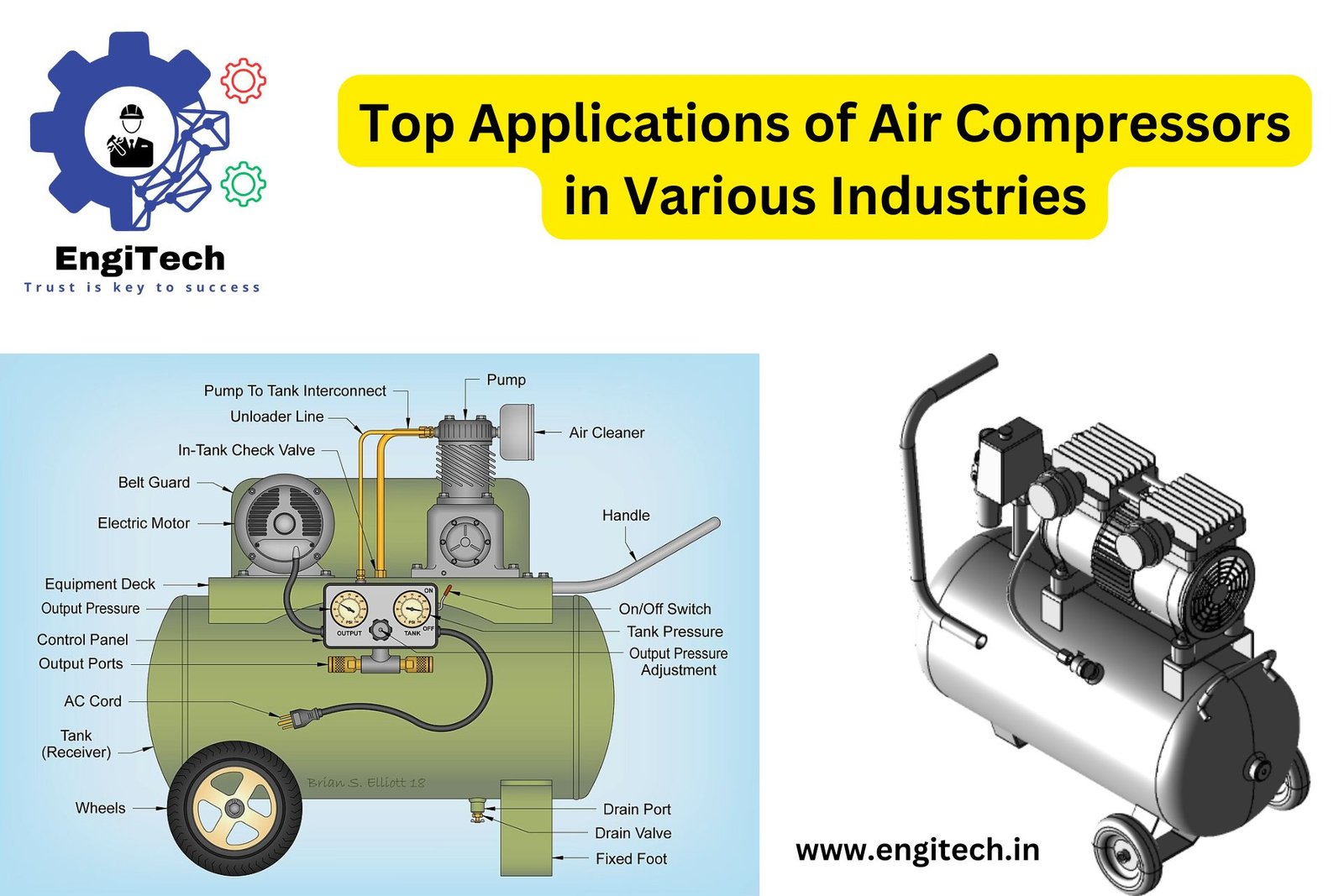The Ultimate Guide to Pleated Filters: Everything You Need to Know

In industrial and residential settings, clean air is crucial for both machinery efficiency and human health. One of the most effective ways to ensure clean air is by using high-quality filters. Among the various types of filters available, pleated filters stand out due to their superior performance, longevity, and versatility. Whether used in HVAC systems, industrial applications, or even for personal safety, pleated filters have become a go-to solution for businesses and homeowners alike.
This comprehensive guide will explore everything you need to know about pleated filters, including their design, advantages, applications, and maintenance. By the end of this blog, you will have a deep understanding of pleated filters and why they are a smart choice for air filtration.
Table of Contents
What Are Pleated Filters?
Pleated filters are air filters that use folded or pleated media to capture particles. These pleats increase the surface area of the filter, allowing it to trap more contaminants and work more efficiently than traditional flat filters. Pleated filters are commonly made from polyester, cotton, or synthetic fibers and are known for their ability to filter a wide range of particles, from dust and pollen to bacteria and other microscopic contaminants.
Why the Pleating Design?
The pleating design is what sets these filters apart from other filtration systems. By folding the filter media into pleats, manufacturers can pack more material into a small area, increasing the filter’s ability to capture and hold particles without restricting airflow. This results in:
- Increased surface area for filtration
- Improved efficiency over time
- Longer lifespan due to a higher dirt-holding capacity
Key Features of Pleated Filters
To better understand pleated filters, let’s take a look at their primary features:
1. High Efficiency
Pleated filters are highly efficient in removing airborne contaminants. Their larger surface area allows them to capture more particles, ranging from large dust particles to microscopic allergens.
2. Low Airflow Resistance
Despite their increased efficiency, pleated filters offer low resistance to airflow. This means they don’t force HVAC systems or other equipment to work harder, improving energy efficiency and reducing operational costs.
3. Durability
Made from durable materials like synthetic fibers or cotton, pleated filters are designed to last. They resist wear and tear better than non-pleated filters, making them a cost-effective solution over time.
4. Wide Application Range
Pleated filters are versatile and can be used in a variety of settings, including homes, commercial spaces, and industrial environments. They are suitable for use in HVAC systems, air purifiers, and other filtration devices.
5. Environmentally Friendly
Some pleated filters are made from recyclable materials, making them an eco-friendly option for businesses and individuals looking to reduce their carbon footprint.
How Do Pleated Filters Work?
The working mechanism of pleated filters is simple yet effective. As air passes through the pleated material, airborne particles like dust, dirt, mold spores, pollen, and even viruses get trapped in the fibers. The increased surface area allows for a higher volume of air to pass through without compromising the filter’s ability to capture contaminants.
The fibers in pleated filters are usually electrostatically charged, which enhances their ability to attract and trap smaller particles, including fine dust and even some pathogens.
Filtration Efficiency Explained
The efficiency of a pleated filter is often measured by its Minimum Efficiency Reporting Value (MERV) rating. The MERV scale ranges from 1 to 16, with higher numbers indicating better filtration efficiency. Here’s how the ratings typically break down:
- MERV 1-4: Basic filtration for residential use, primarily filtering out large particles.
- MERV 5-8: Suitable for homes and small offices, effectively capturing dust, pollen, and mold spores.
- MERV 9-12: Ideal for environments with higher air quality demands, such as hospitals and clean rooms.
- MERV 13-16: The highest efficiency, capable of filtering bacteria, viruses, and even smoke particles.
For most residential and light commercial applications, a pleated filter with a MERV rating of 8 to 13 is sufficient. However, higher ratings might be necessary for specific industrial or healthcare settings.
Types of Pleated Filters
Pleated filters come in various designs, tailored to different applications and environments. Understanding the different types can help you choose the right filter for your needs.
1. HVAC Pleated Filters
These filters are designed for heating, ventilation, and air conditioning systems. They help improve indoor air quality by removing particles that can affect both human health and the efficiency of HVAC systems.
2. Carbon Pleated Filters
These filters combine pleated media with activated carbon. The carbon helps to absorb odors and gases, making them ideal for use in environments where both air purification and odor control are essential, such as hospitals, kitchens, or commercial spaces.
3. Washable Pleated Filters
Some pleated filters are designed to be washed and reused. These filters are a more environmentally friendly and cost-effective option for businesses and homeowners looking to reduce waste.
4. High-Temperature Pleated Filters
Used in industrial settings where high temperatures are common, these filters are designed to maintain their integrity and filtration efficiency even under extreme conditions.
Benefits of Using Pleated Filters
Now that we’ve covered the basics, let’s dive deeper into the reasons why pleated filters are a smart choice for air filtration.
1. Improved Air Quality
Pleated filters are highly effective at removing a wide range of contaminants, including dust, pollen, pet dander, mold spores, and even bacteria. This makes them ideal for improving air quality in both residential and commercial spaces.
2. Energy Efficiency
By maintaining low airflow resistance, pleated filters ensure that HVAC systems and other air-handling equipment don’t have to work harder than necessary. This can lead to significant energy savings over time.
3. Cost-Effectiveness
Although pleated filters may have a higher upfront cost compared to non-pleated filters, their increased efficiency and longer lifespan make them a cost-effective solution in the long run.
4. Versatility
From HVAC systems to industrial applications, pleated filters can be used in a variety of settings. Their ability to handle different types of contaminants and air quality requirements makes them a versatile filtration solution.
5. Environmental Impact
Many pleated filters are made from recyclable materials, making them a more sustainable option for air filtration. Additionally, washable pleated filters reduce waste and lower the demand for disposable filters.
Applications of Pleated Filters
Pleated filters have a wide range of applications, making them a popular choice in various industries.
1. Residential Use
Pleated filters are commonly used in home HVAC systems to improve indoor air quality. They help remove dust, pollen, pet dander, and other allergens, making them especially useful for households with asthma or allergy sufferers.
2. Commercial Buildings
In office buildings, hotels, and other commercial spaces, pleated filters are essential for maintaining clean air and ensuring the proper functioning of HVAC systems. They help reduce airborne contaminants that can affect both employee health and equipment performance.
3. Industrial Settings
Industries that deal with heavy machinery, chemicals, and other airborne pollutants often rely on high-efficiency pleated filters to protect both their workers and their equipment. High-temperature pleated filters are particularly useful in these settings.
4. Healthcare Facilities
Hospitals, clinics, and other healthcare facilities require high-efficiency filtration systems to maintain sterile environments. Pleated filters with high MERV ratings are commonly used to filter out bacteria, viruses, and other harmful particles.
5. Automotive
Pleated filters are also used in automotive applications, particularly in engine air intake systems and cabin air filters. These filters help remove dust, pollen, and other particles that can affect both vehicle performance and passenger comfort.
How to Choose the Right Pleated Filter
Choosing the right pleated filter depends on several factors, including the environment, the type of contaminants you want to filter, and your HVAC system’s requirements.
1. Consider the MERV Rating
The MERV rating is one of the most important factors to consider when choosing a pleated filter. As discussed earlier, higher ratings offer better filtration, but they may also restrict airflow. For most homes, a MERV rating of 8 to 12 is sufficient.
2. Filter Size
Make sure the pleated filter you choose fits your HVAC system or air purifier. Most manufacturers provide sizing information, so check your equipment’s specifications before purchasing a filter.
3. Material
Different materials offer different levels of filtration efficiency and durability. Synthetic fibers are more durable and provide better filtration than cotton or paper materials.
4. Cost vs. Lifespan
While pleated filters tend to be more expensive than other types, their longer lifespan and increased efficiency make them a worthwhile investment in the long run.
5. Special Requirements
If you need a pleated filter for a specific application, such as odor control or high-temperature environments, choose one that is specifically designed for those conditions.
How to Maintain Pleated Filters
Proper maintenance of pleated filters is essential to ensure their efficiency, longevity, and overall performance. While pleated filters are designed for durability, regular upkeep will help extend their lifespan and prevent problems such as reduced airflow or filter clogging. Below are practical tips for maintaining pleated filters in different applications.
1. Regular Inspection
One of the simplest ways to maintain pleated filters is by inspecting them regularly. This ensures that they are functioning correctly and haven’t accumulated too much dirt or debris. Regular inspections help detect potential issues early, such as clogs or tears, allowing for timely replacements or repairs.
How Often Should You Inspect?
- Residential HVAC Filters: Check every 1-2 months during peak seasons (summer and winter).
- Commercial Filters: Inspect at least once a month, especially in areas with high dust or pollutant levels.
- Industrial Filters: Depending on the environment, inspect weekly or bi-weekly for optimal performance.
2. Cleaning Washable Pleated Filters
Some pleated filters are washable and designed for reuse. These filters can be cleaned by rinsing them under water or using a gentle cleaning solution. It’s important to ensure that the filter is completely dry before reinstalling it to prevent mold or bacterial growth.
Steps to Clean Washable Filters:
- Turn off the system and remove the filter.
- Rinse the filter under warm water, gently shaking off debris.
- Use a soft brush to remove stubborn dirt.
- Let the filter air dry completely before reinstalling.
Pro Tip: Avoid using harsh chemicals or high-pressure water, as this can damage the pleats and reduce the filter’s effectiveness.
3. Replace Non-Washable Filters
For filters that aren’t washable, replacement is necessary when they become too clogged or damaged. Most pleated filters should be replaced every 3-6 months, depending on usage and environmental conditions. Delaying replacement can result in reduced airflow and decreased air quality.
When to Replace?
- Noticeable drop in airflow: If your HVAC system seems to be working harder to maintain temperature, it could indicate a clogged filter.
- Increased energy bills: If you see a rise in energy costs, it may be due to a filter that is restricting airflow.
- Visible dirt buildup: If the filter looks dirty or grayish, it’s time for a replacement.
4. Check for Air Leaks
Inspect the filter housing or frame to ensure that there are no air leaks around the edges of the filter. Air bypassing the filter can carry dust and pollutants into the system, reducing its efficiency.
5. Maintain a Clean Environment
A clean environment can extend the life of pleated filters. Dusty or dirty environments, whether in a home, commercial building, or industrial facility, will cause filters to clog more quickly. Regular cleaning of ducts, vents, and surrounding areas can reduce the strain on your filters and improve indoor air quality.
Pleated Filters vs. Other Filter Types: A Comparative Analysis
When choosing an air filter, it’s important to weigh the benefits of pleated filters against other types of filters. Let’s examine how pleated filters compare with other commonly used filters like fiberglass, HEPA, and electrostatic filters.
1. Pleated Filters vs. Fiberglass Filters
Fiberglass filters are one of the cheapest and most basic options for air filtration. However, they offer limited filtration capabilities and are primarily designed to protect HVAC systems rather than improve indoor air quality.
- Efficiency: Pleated filters are far more efficient, capturing a greater variety of particles including pollen, mold spores, and pet dander.
- Durability: Fiberglass filters typically have a much shorter lifespan and need more frequent replacements.
- Cost: While fiberglass filters are cheaper upfront, the longer lifespan and better performance of pleated filters make them more cost-effective in the long run.
2. Pleated Filters vs. HEPA Filters
High-Efficiency Particulate Air (HEPA) filters are highly effective at capturing microscopic particles, making them the preferred choice in environments requiring sterile conditions, such as hospitals and clean rooms.
- Efficiency: HEPA filters outperform pleated filters in environments where ultra-fine particles must be removed (such as viruses and bacteria). However, for standard residential or commercial use, pleated filters provide more than enough efficiency.
- Airflow Resistance: HEPA filters often create significant airflow resistance, requiring powerful fans or blowers to maintain system efficiency. Pleated filters, on the other hand, balance filtration and airflow, making them more suitable for regular HVAC systems.
- Cost: HEPA filters are typically more expensive than pleated filters, both in terms of upfront costs and long-term maintenance.
3. Pleated Filters vs. Electrostatic Filters
Electrostatic filters use static electricity to capture airborne particles. They are available in both washable and disposable varieties and are known for their low airflow resistance.
- Efficiency: Pleated filters generally outperform electrostatic filters in terms of particle capture, especially for smaller contaminants like bacteria or fine dust.
- Durability: Washable electrostatic filters have the advantage of being reusable, but they may lose their efficiency over time.
- Cost: Electrostatic filters can have higher upfront costs, particularly the washable varieties, but their reusability can make them more cost-effective in some scenarios.
Conclusion: Which Filter Is Best for You?
For most residential and commercial applications, pleated filters offer the best balance between cost, efficiency, and ease of use. They provide excellent filtration without overly restricting airflow, making them a versatile and practical choice for most environments.
Common Misconceptions About Pleated Filters
There are several myths and misconceptions surrounding pleated filters that can lead to confusion about their effectiveness and use. Let’s address some of the most common myths:
Myth 1: Pleated Filters Are Too Restrictive for Airflow
Some people believe that pleated filters are too restrictive and can cause strain on HVAC systems. However, this is largely a misconception. Modern pleated filters are designed to offer high filtration efficiency without significantly restricting airflow. In fact, their increased surface area often results in better airflow compared to flat filters.
Myth 2: Pleated Filters Are Too Expensive
While pleated filters may cost more upfront than fiberglass filters, their longer lifespan and superior performance make them a more cost-effective option over time. Additionally, pleated filters can help improve energy efficiency, potentially leading to savings on energy bills.
Myth 3: All Pleated Filters Are the Same
Not all pleated filters are created equal. Filters come in various MERV ratings, materials, and designs, each suited for different applications. It’s important to choose a pleated filter that matches your specific air quality needs.
Conclusion
Pleated filters are an essential component in maintaining clean and healthy indoor air. With their superior filtration efficiency, durability, and versatility, pleated filters offer a cost-effective and reliable solution for both residential and industrial applications. By choosing the right pleated filter for your environment and maintaining it properly, you can ensure optimal performance and long-term benefits.
At EngiTech, we specialize in providing industry insights and expert recommendations for air filtration solutions. Whether you’re looking to improve air quality in your home or upgrade an industrial HVAC system, our resources are designed to help you make informed decisions.


